A Sunset at Thebes, negative 1874, woodburytype 1876
On June 8, 2012, the last transit of Venus (when the planet passes between the earth and the sun) will occur in our lifetime. This rare event takes place in pairs eight years apart separated by gaps of ~122 years. For our generation, this means 2004 and 2012. Before this, the last pair of transits took place in December 1874 and December 1882.
For the 1874 transit, the British Observatory sent five expeditions to different parts of the world; including Hawaii, the Mauritius Island, the Kerguelen Island, Cape Town, and Egypt. Charles Orde Browne led the party to Cairo, which included photographer William de Wiveleslie Abney (1843-1920).
According to the Oxford Dictionary of National Biography, Abney was educated at the Royal Military Academy at Woolwich and, after a brief service in Bombay, was stationed at Chatham in 1871. As assistant to the instructor in telegraphy at the School of Military Engineering, Abney was given a small laboratory and photographic darkroom.
By the end of that year, he published Instruction in Photography for Use at the School of Military Engineering and became an active member of the Royal Photographic Society of London. Thanks to the generous donation of David H. McAlpin, Class of 1920, we hold this and most of Abney’s other scientific studies.
The young officer’s work led directly to the formation of a new school of chemistry and photography in 1874, with Abney as assistant instructor. Then, at the age of thirty-one, he was asked to organize the photographic observation of the transit of Venus from Egypt.
While in Egypt, Abney and his three assistants also created dozens of photographs not directly related to Venus, forty of which he later published in Thebes and its Five Great Temples (1876). A copy of Abney’s book with outstanding woodburytypes has been acquired by Princeton University.
In a letter sent to the London Photographic Society in 1875, Abney wrote, “…My chief work lay at Thebes, distant nearly 500 miles to the south of Cairo; and it was a matter of no small anxiety to me how I should transport all my instruments and observatory to that spot. The boats, or “dahabeaths” as they are called, would hardly have taken all unless I had engaged one which was out of all proportion to the passenger accommodation which I required.”
“…We started on the 25th October from Cairo, our baggage occupied three large trucks on the railway … On the 7th November we sighted Karnak just at sunset, and a glorious vision it was. The old ruins seemed like rubies set in the dark green of the palms which rose between us and them.”
“…We had taken out some ten dozen dry plates for solar work, which we had prepared at home, and began exposing them … I may mention one fact, viz., that dissolved dried albumen was used instead of white of eggs … On the day of the transit we exposed a plate about every one and a-half minute during the transit, beginning about twenty minutes after sunrise and finishing twelve minutes before internal contact.”
“As each plate was exposed it was passed into the dark room through a different aperture, taken out of the slide by a second sapper in the dark room, placed in its own groove, and the slide passed to be filled from the next box. I personally placed the slide in the photoheliograph, exposed each plate, taking up the time from my chronometer, and registered the number of the plate as shown on the back, together with the exact time of exposure.”
Abney’s photographs of Venus can be seen at National Maritime Museum, Greenwich. Here is one: http://www.nmm.ac.uk/server/show/conMediaFile.15732
William de Wiveleslie Abney (1843-1820), Thebes and its Five Greater Temples (London: Sampson, Low, Marston, Searle & Rivington, 1876). 40 woodburytypes and descriptive text on the Egyptian city and its monuments, including Karnak, Luxor, Medinet Haboo, the Memnonium, and the Goorneh Temple. Graphic Arts GAX 2011- in process. OCLC lists only eight other copies in the United States.
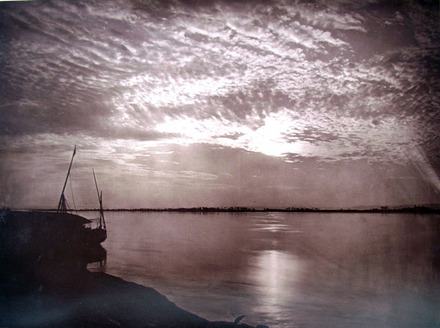
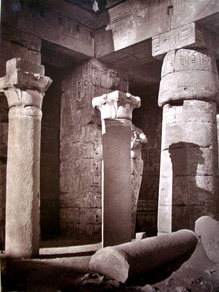
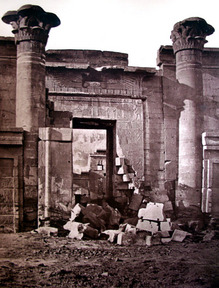
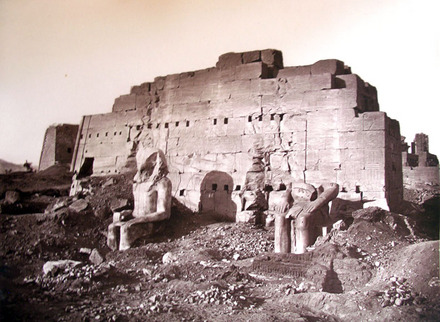
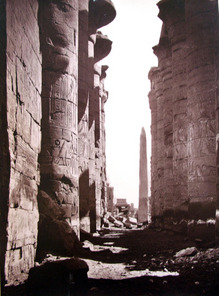
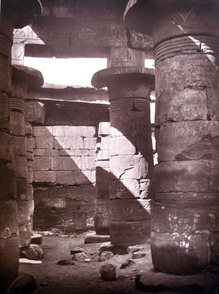

Thank you for sharing this story about Abney and the transit of Venus. I particularly appreciate the excerpts.
Couple of items. The 2012 transit of Venus begins on June 5 or June 6, depending on your location on the globe.
The 8-year gaps are separated by either 105 1/2 years or 121 1/2 years. After 2012, the next transits of Venus will occur in December 2117 and 2125. Notice how the pair flip-flips each century-plus from December to June. For observers in the northern hemisphere, the 2012 transit of Venus launches summer.
For details (and to start planning for your 2012 transit of Venus experience, google "transit of Venus" or go to www.transitofvenus.org.
Thanks again for your transit of Venus research and enthusiasm.